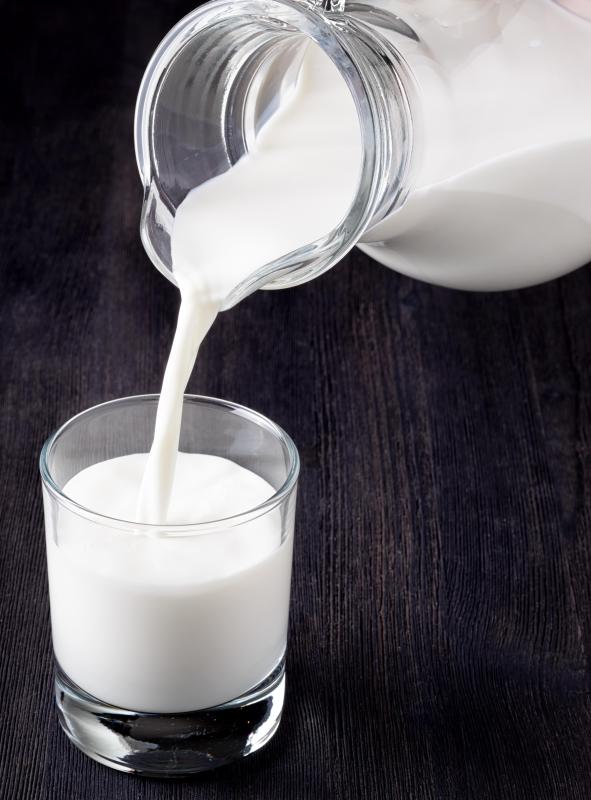At AllThingsNature, we're committed to delivering accurate, trustworthy information. Our expert-authored content is rigorously fact-checked and sourced from credible authorities. Discover how we uphold the highest standards in providing you with reliable knowledge.
What are Shetland Sheep?
Shetland sheep are a diminutive breed of sheep that comes in a variety of colors and patterns and produces very fine wool. They originated in the Shetland Islands, although they are currently raised by sheep farmers in many areas of the world. They are often raised for their for meat in addition to wool. They are very hardy and easy to raise, although they are slow growing breed.
Shetland sheep are actually the smallest of the British breeds of sheep, with adult rams weighing 90 to 125 pounds (40.8 to 56.7 kg), and adult ewes weighing slightly less at 75 to 100 pounds (34 to 45.4 kg). Rams have attractive, curved spiral horns, and the ewes are hornless. Shetland sheep are fine boned with a short, fluke shaped tale. They come in many colors such as white, brown, black, silvery grey, light brown, and reddish brown. There are also several patterns with distinctive markings.

The wide range of colors is a plus for wool production, since the wool is often used undyed for traditional knitwear, although white wool commands the best prices. Shetland sheep produce wool that is very fine, and it is preferred wool of hand spinners all over the world. It has a soft feel that lends itself well to sweaters and other types of clothing and blankets. An extra fine type of lace shawl is a specialty in the Shetland Islands; called a ring shawl, it's actually so fine that it can be passed through a wedding ring.
Originating in the Shetland Islands in Scotland, Shetland sheep are considered to be a British breed. They are also raised by sheep farmers in several areas of the world, in many Northern European countries such as Scandinavia and Finland as well as in Canada and the U.S. The most common uses are for wool and meat. They are said to produce tasty cuts; since they are slow to grow, however, they often need to be raised for a longer amount of time than other breeds used for slaughter. They are also used at times for conservation grazing, a strategic practice that is supposed to help preserve the grassland areas.
The Shetland sheep has kept many of its primitive instincts and is considered to be very close in nature to wild sheep. The ewes are good mothers that give birth to their lambs easily and produce a lot of milk. Shetland sheep are able to survive under very sparse conditions if necessary. They tend to be conservative in its grazing practices and generally don't overgraze the land. This makes the breed extremely easy to raise, since it is mostly able to fend for itself and needs very little human intervention to thrive.
Frequently Asked Questions
What are Shetland Sheep?
Shetland Sheep are a small, hardy breed originating from the Shetland Isles of Scotland. Renowned for their fine, soft wool, they are one of the smallest sheep breeds. These sheep are known for their wide range of natural colors, which can be over 30 different shades, according to the Shetland Sheep Society. They are also prized for their adaptability and ease of care.
What is unique about Shetland Sheep wool?
Shetland Sheep wool is exceptionally soft and fine, making it highly sought after for knitting and weaving. The wool is also known for its natural variety of colors, eliminating the need for dyeing. The Shetland Wool Week celebrates this unique fiber annually, highlighting its quality and the traditional skills associated with it.
How do Shetland Sheep adapt to their environment?
Shetland Sheep are remarkably adaptable, having evolved in the challenging climate of the Shetland Isles. They possess a double-layered coat, with a fine, soft undercoat and a longer, coarser outer coat, providing insulation and protection from wind and rain. This adaptability allows them to thrive in various climates beyond their native habitat.
What are the common uses for Shetland Sheep?
Shetland Sheep are primarily raised for their exquisite wool, which is a staple in the textile industry for producing fine garments and crafts. Their meat is also considered a delicacy, known for its lean and flavorful qualities. Additionally, they are often kept for conservation grazing, helping maintain the biodiversity of grasslands.
How big do Shetland Sheep get?
Shetland Sheep are relatively small, with mature ewes weighing between 75 to 100 pounds and rams between 90 to 125 pounds, as reported by the North American Shetland Sheepbreeders Association. Their diminutive size makes them easier to handle and less damaging to pastures compared to larger sheep breeds.
Are Shetland Sheep good for small farms?
Yes, Shetland Sheep are an excellent choice for small farms. Their small size and efficient grazing habits make them suitable for limited acreage. They are also known for their easy lambing and strong mothering instincts, which contribute to their popularity among small-scale farmers and hobbyists looking for a low-maintenance flock.
AS FEATURED ON:
AS FEATURED ON:











Discuss this Article
Post your comments